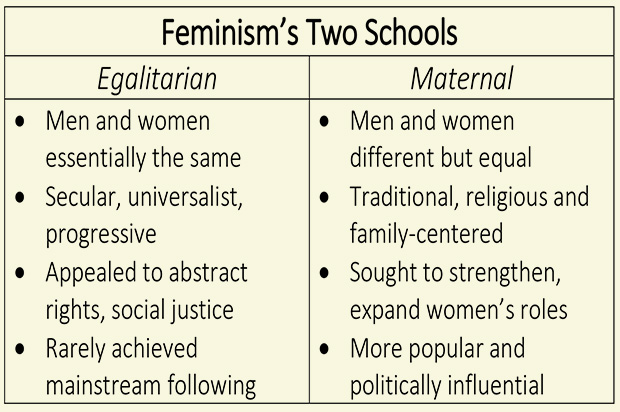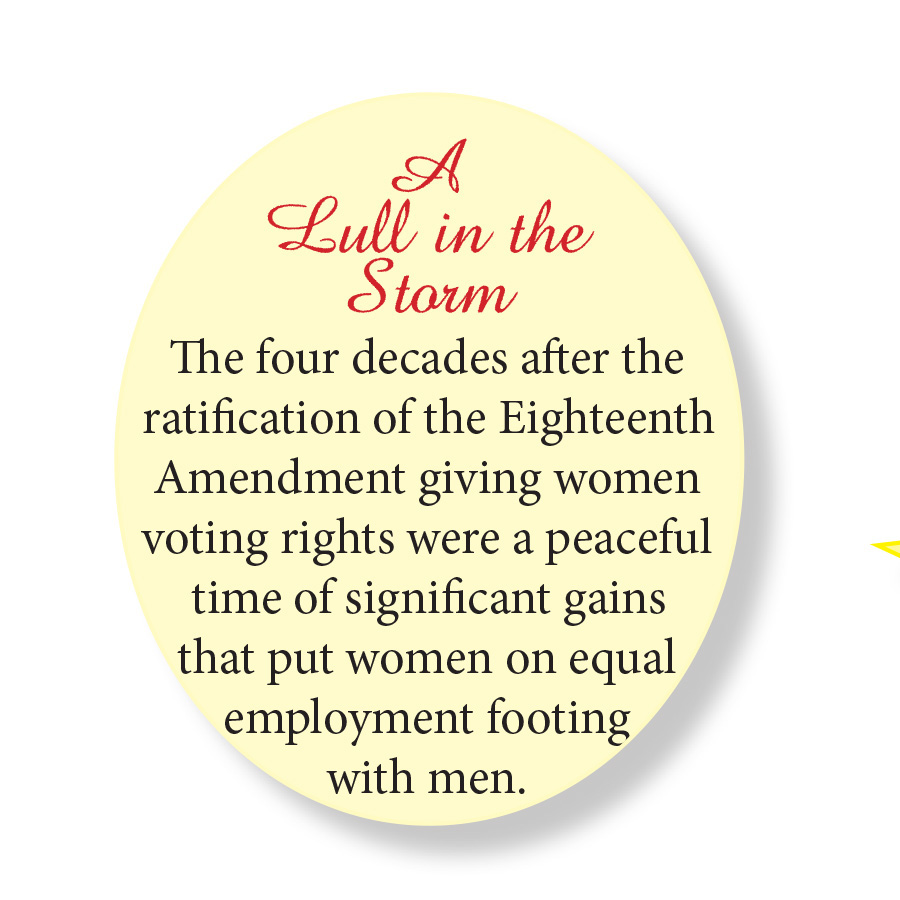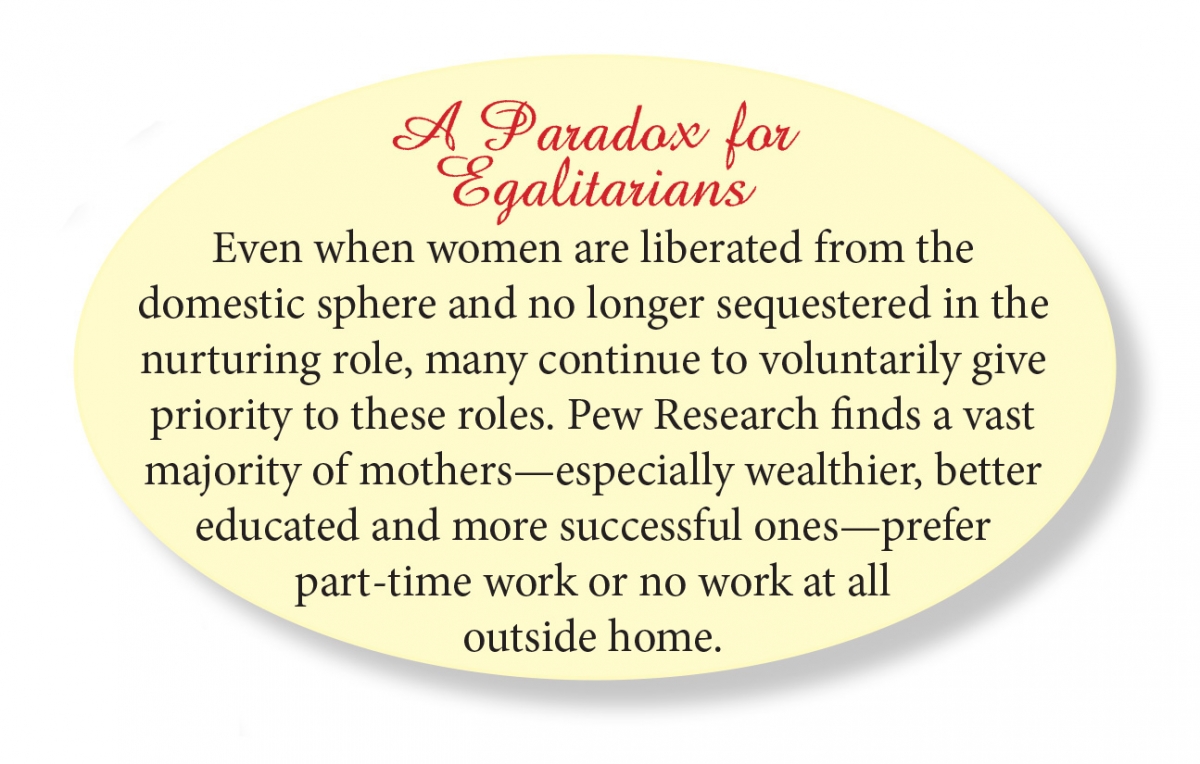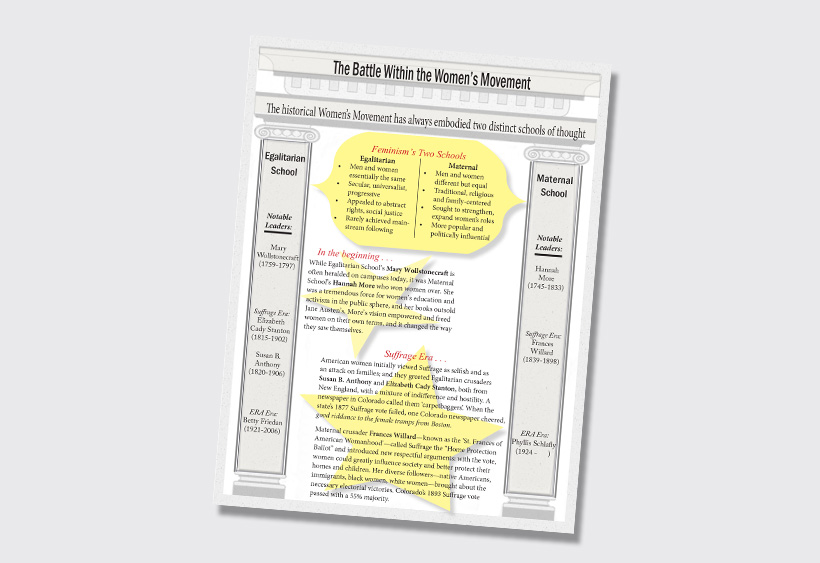
The historical Women’s Movement has always embodied two distinct schools of thought: the Egalitarian School and the Maternal School.
In the beginning …
While Egalitarian School’s Mary Wollstonecraft (1759-1797) is often heralded on campuses today, it was Maternal School’s Hannah More (1745-1833) who won women over. She was a tremendous force for women’s education and activism in the public sphere, and her books outsold Jane Austen’s. More’s vision empowered and freed women on their own terms, and it changed the way they saw themselves.
Suffrage Era …
American women initially viewed Suffrage as selfish and as an attack on families; and they greeted Egalitarian crusaders Susan B. Anthony (1820-1906) and Elizabeth Cade Stanton (1815-1902), both from New England, with a mixture of indifference and hostility. A newspaper in Colorado called them ‘carpetbaggers’. When the state’s 1877 Suffrage vote failed, one Colorado newspaper cheered, good riddance to the female tramps from Boston!
Maternal crusader Frances Willard (1839-1898) – known as the St. Frances of American Womanhood‘ – called Suffrage the “Home Protection Ballot” and introduced new respectful arguments: with the vote, women could greatly influence society and better protect their homes and children. Her diverse followers – native Americans, immigrants, black women, white women – brought about the necessary electoral victories. Colorado’s 1893 Suffrage vote passed with a 55% majority.

Equal Rights Amendment Era …
The Egalitarian School and the Maternal School came to blows again with the proposed Equal Rights Amendment to the U.S. Constitution in 1972. Betty Friedan (1921-2006) founded the pro-ERA National Organization for Women and published The Feminine Mystique, a book filled with derision and hatred of housewives and stay-at-home mothers.
Believing that Friedan and others were using the ERA as a tool to impose an anti-homemaker, anti-mother agenda on the nation, Phyllis Schlafly (1924- ) responded by founding the anti-ERA women’s organization, Eagle Forum.
In a debate on the PBS-TV program Firing Line, Schlafly argued the ERA, if adopted, would cause women to be drafted into combat and force the elimination of such things as single-sex schools and Father-Daughter dances. Her Egalitarian opponent, an attorney for NOW, responded that ‘women should be drafted into combat’.
Sentiment began to change quickly, and the Equal Rights Amendment went down to defeat.
The Modern Era …
Following their defeat, Egalitarians retreated into advocacy groups, research centers, women’s studies programs and law schools.
Today 116 women’s organizations – from NOW to the American Association of University Women – use their considerable skills to aggressively push the Egalitarian feminist agenda by other means. These organizations are the springboard for modern day radicals such as Eve Ensler, author of The Vagina Monologues, and Bell Hooks, author of Teach to Transgress.

The Future of the Women’s Movement …
Fair or not, feminism today is associated in the public’s mind with fringe hard-liners, and its dire philosophy might be summed up as Women are from Venus; Men are from Hell. It is not surprising that women in large majorities keep their distance – and men run for cover – from the feminist movement.
Some argue that since women have achieved the basic goal of equality, why not let feminism just fade from the scene. Dr. Christina Hoff Sommers disagrees for three reasons:
- women formed a movement, and we need to understand what it did well;
- the quest for equality across the globe has only begun; and
- even in the West, there continues to be a struggle for women to find balance in home-work realities.
To be effective, Sommers argues, the women’s movement needs to be rescued from its current outcast state. The greatest historical progress has been made when conservative women have been at the helm. Indeed, that is the great lesson of the women’s movement: a moderate, temperate, inclusive and reality-based philosophy has always appealed to a majority of women. It would again if moderate, conservative, and libertarian women take the movement back from the radicals and reorganize it as ‘Freedom Feminism’.
Based on a presentation by Dr. Chirstina Hoff Sommers to the Conservative Women’s Network in 2013. For more information on Freedom Feminism, see “How to Revive Feminism: A Primer by Christina Hoff Sommers.”

